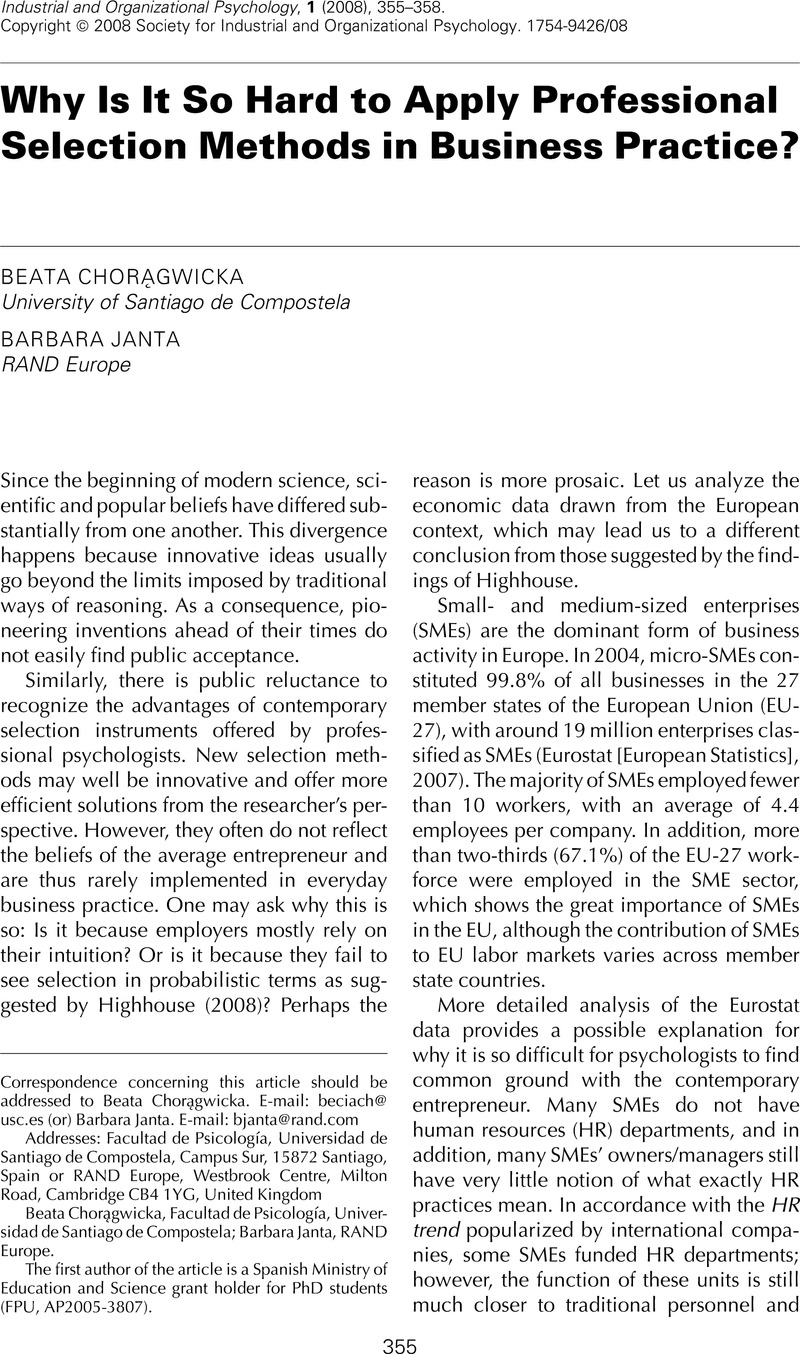Article contents
Why Is It So Hard to Apply Professional Selection Methods in Business Practice?
Published online by Cambridge University Press: 07 January 2015
Abstract

- Type
- Commentaries
- Information
- Copyright
- Copyright © Society for Industrial and Organizational Psychology 2008
Footnotes
Facultad de Psicología, Universidad de Santiago de Compostela, Campus Sur, 15872 Santiago, Spain or RAND Europe, Westbrook Centre, Milton Road, Cambridge CB4 1YG, United Kingdom
The first author of the article is a Spanish Ministry of Education and Science grant holder for PhD students (FPU, AP2005-3807)
References
- 5
- Cited by




